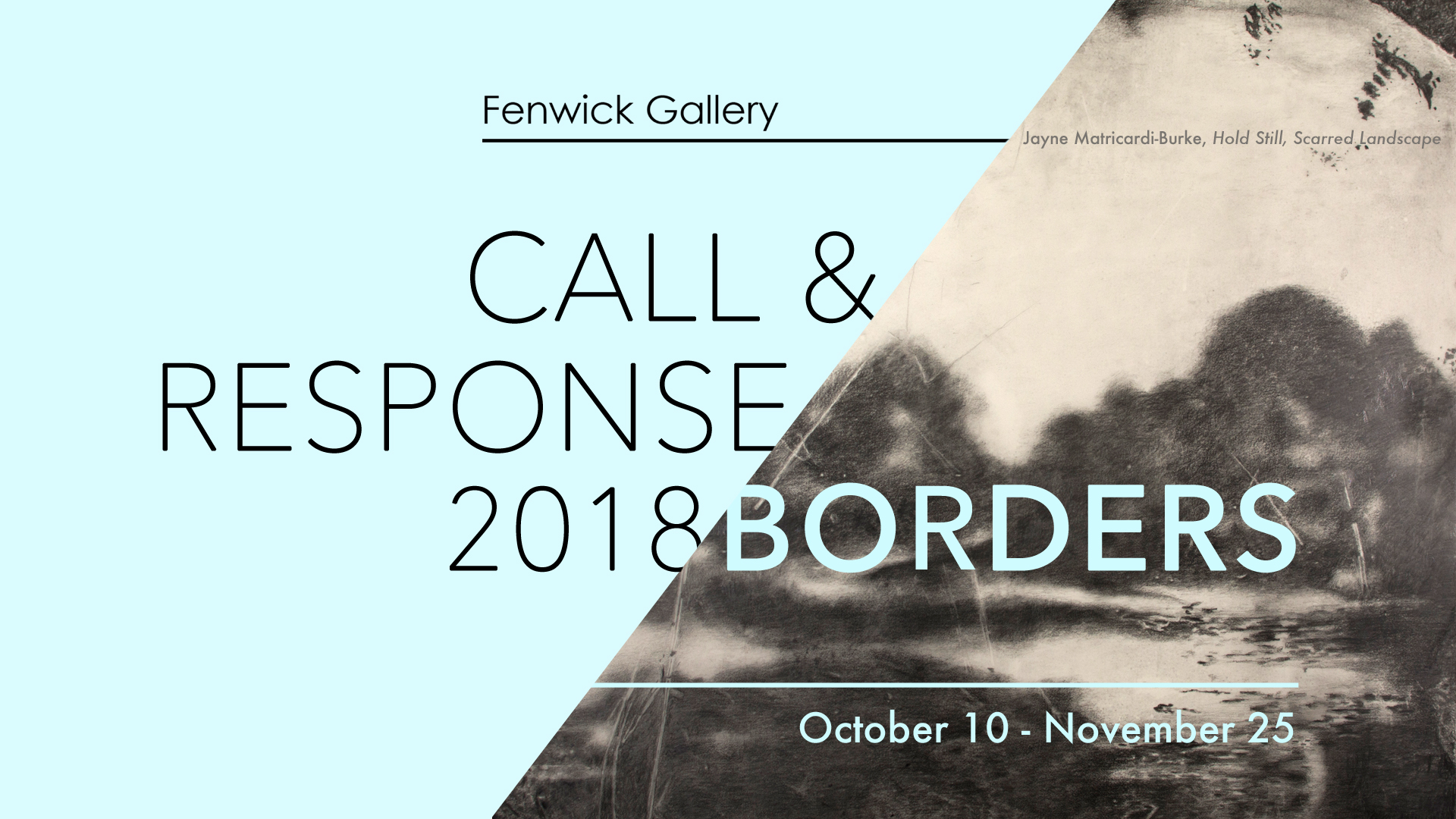Locale features artists’ books, repurposed books, and sculptural books responding to the Washington, DC area through concept or specific material. The exhibit features artwork by George Mason University Alumni, Faculty and Students as well as area artists. The artists used the format or concept of a book to express personal identities, explore local history and record the impact of political, biological or cultural systems in the area.
The District Almanac was created Sarah McDermott, Marjorie Devereux, Li Pallas, Jennaway Pearson, Sydney Reisen, Maria Veronica San Martin, and Whitney Stahl as Marginalia Press through through the Corcoran College of Art + Design Art and the Book Masters Program in 2012. The book uses the format of the Farmers’ Almanac to map aspects of Washington, DC including bird migration, sewage overflow, affordable housing, the DC Metro System, grocery stores, farmers’ markets, graveyards, parks, and ethnicity distribution.
Tamryn McDermott’s piece, E Pluribus Unum, represents American political systems through a sculptural book in which the pages of each book are slings in a structure reminiscent of Newton’s Cradle. Each sling contains building material relating to facets of ancient Roman democracy. In So we beat on, boats against the current, borne back ceaselessly into the past, Mark Kelner recreated F. Scott Fitzgerald’s grave ledger using 50 copies of The Great Gatsby. Fitzgerald is buried in Rockville, Maryland, Kelner’s hometown, and the ledger is inscribed with the final line of the well known classic. The piece brings this local landmark into the library using books as the medium as well as the subject matter of the work.
Anne Smith photographed the walls of her DC neighborhood and created an accordion book, Keep In/Keep Out, of collaged photographs reorganizing the walls as if they were individual bricks in a larger structure. The new architecture is ambiguous and allows for reflection on the protective and exclusive nature of a wall. Leah Dwyer created a flag book, Too Many Suits, as a reaction to the business attire that is typically seen in the District. Camillia Elci visited various locations in DC and took note of conversations she overheard. She then used the overheard conversations to create a poem where each line is a separate page in her book, What I Heard in the District. Jacob Lahah repurposed a map of the Washington, DC to create a book marking the various locations providing HIV prevention resources as a response to learning that DC is facing epidemic levels of infection in his artists’ book, A Map Of HIV Prevention Resources In Washington DC.
Christy Ball calls attention to the Chesapeake Bay and its tributaries through her book, Chesapeake | Book 1. Materials gathered from the bay are incorporated into the book structure and imagery of the flora and fauna of the area are displayed on the pages. Melody Cook’s piece, Not Born to Run, chronicles her experience training for and running in the DC Marathon. Jessica Kallista’s collages repurpose dictionary pages to depict the Bunnyman, a Fairfax County legend.
By using the concept of a book as the starting point for their work, the artists in the exhibit provide a conceptual bridge between traditional concepts of a library’s function and alternative methods of thinking, learning and scholarship. The work is not only founded in various methods of research, but the artwork itself becomes a research tool for library patrons. By considering what is familiar to them and using books as a way to consider place and environment, the artists open up ways of thinking about the position of locality within a global perspective.
-Sarah Irvin, Curator
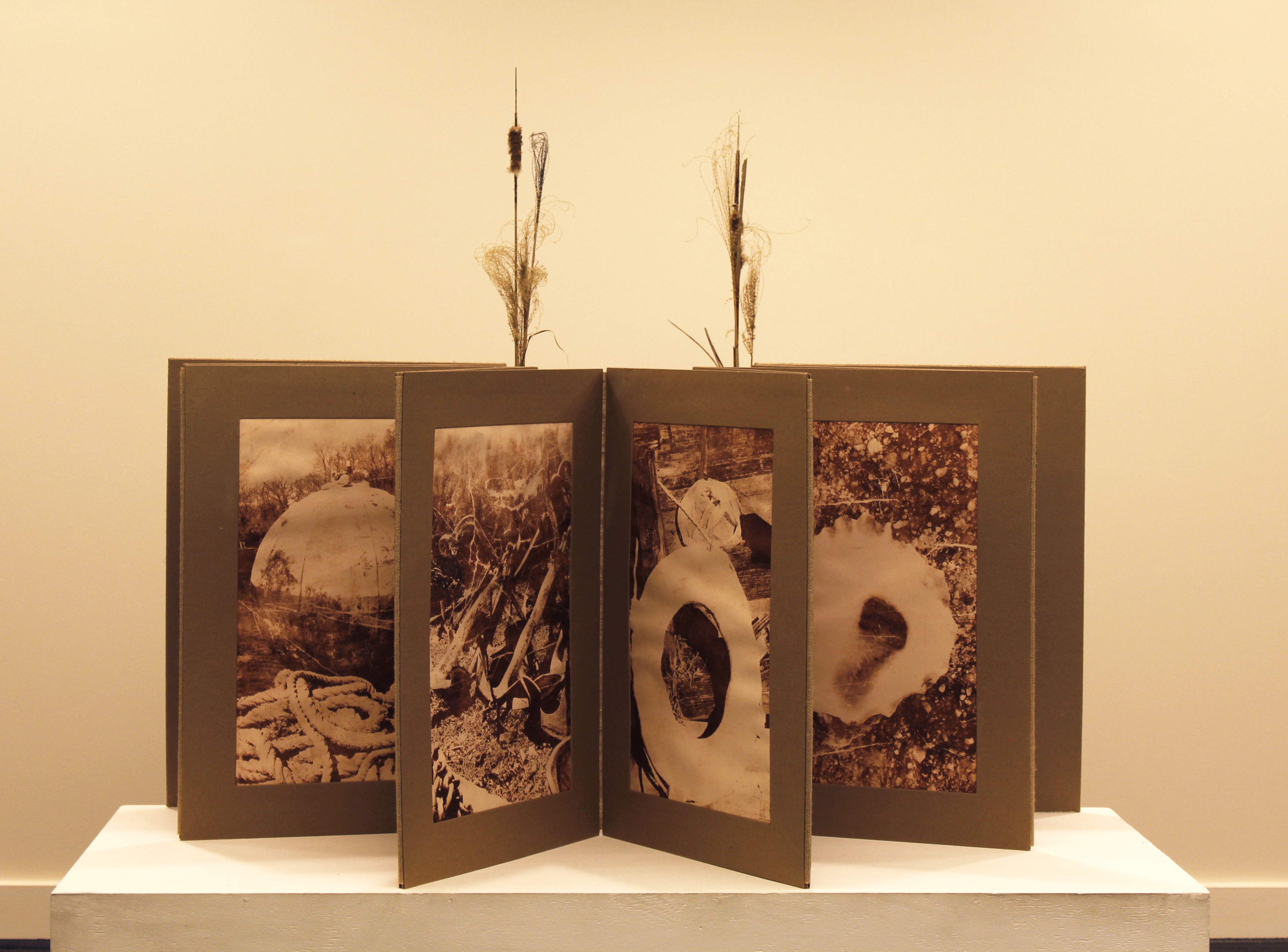 Christy Ball
Christy Ball
Chesapeake | Book 1, May 2014
Mixed Media, Found Materials, Handmade Paper, Gum Arabic Transfers
This book reminds us that change along the Chesapeake Bay is inevitable. The landscape shifts and transforms with every storm. People who depend on the water for their livelihood are getting few and far between. Inevitably the physical, economic and social traditions of the Chesapeake Bay are vanishing. Our modern society needs to see the importance of protecting not only the bay itself but also the cultural heritage of the Chesapeake from the threat of extinction. The materials and photographs come together in the book asking viewers to reflect on their own interactions with the bay and its tributaries.
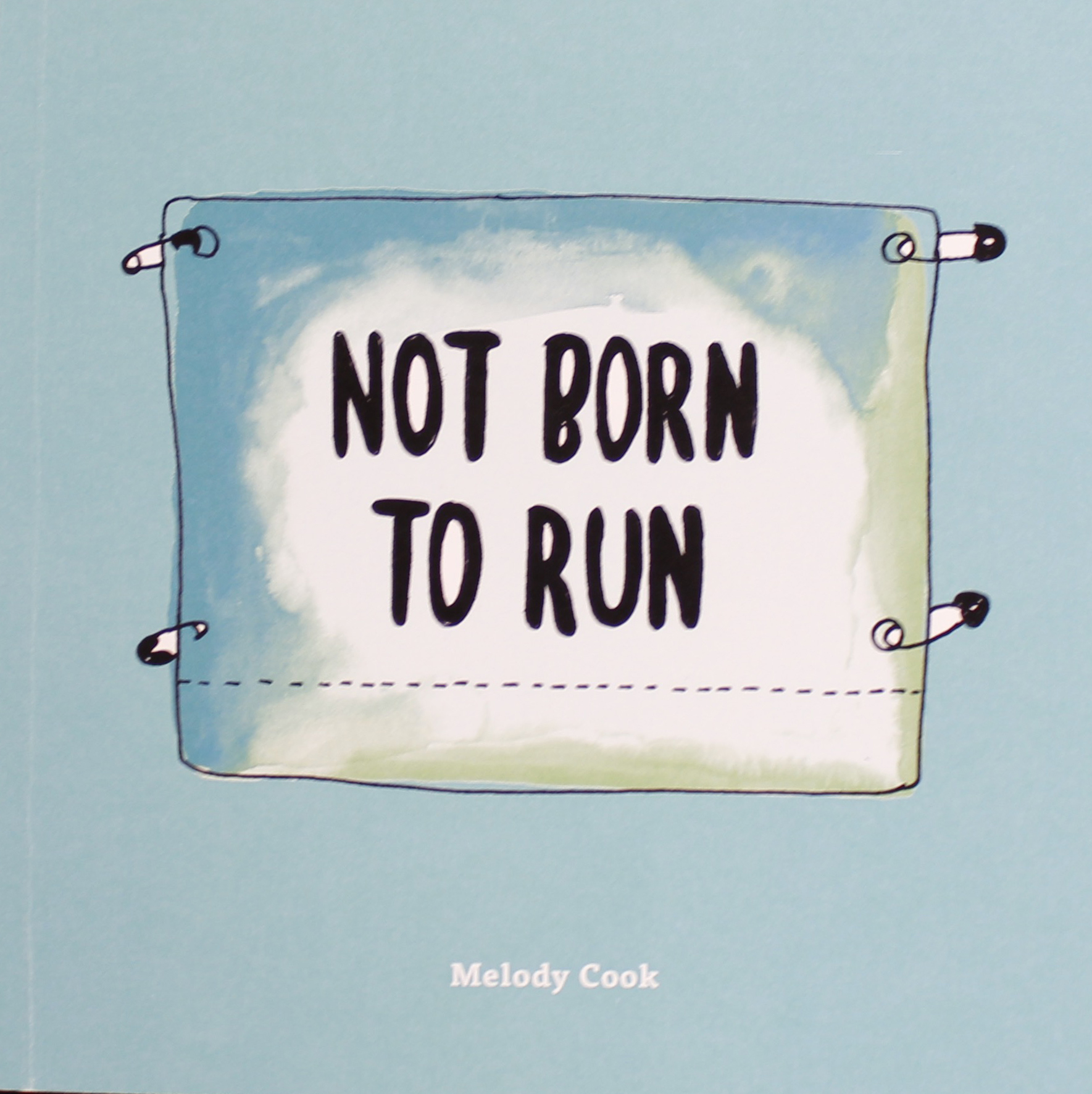
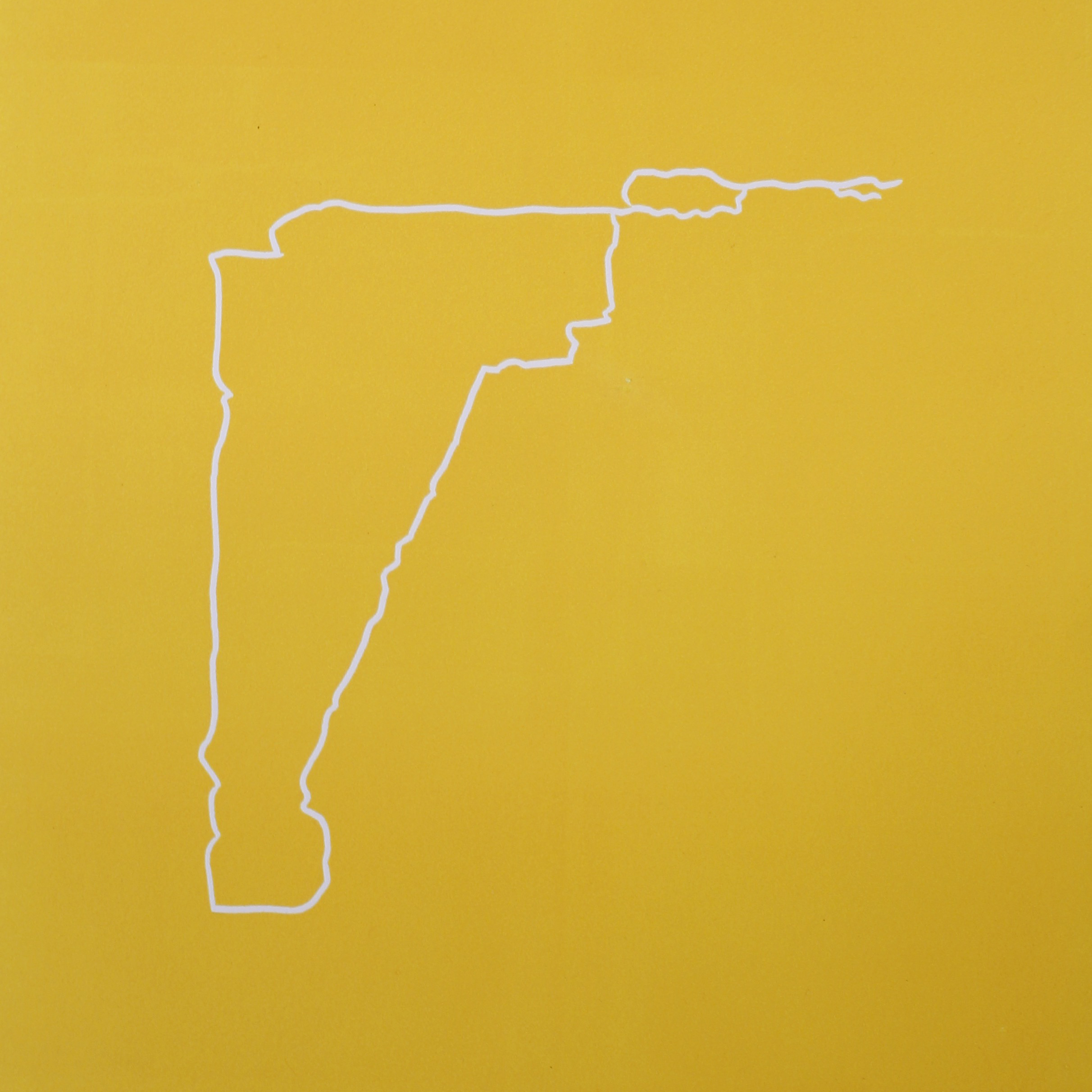
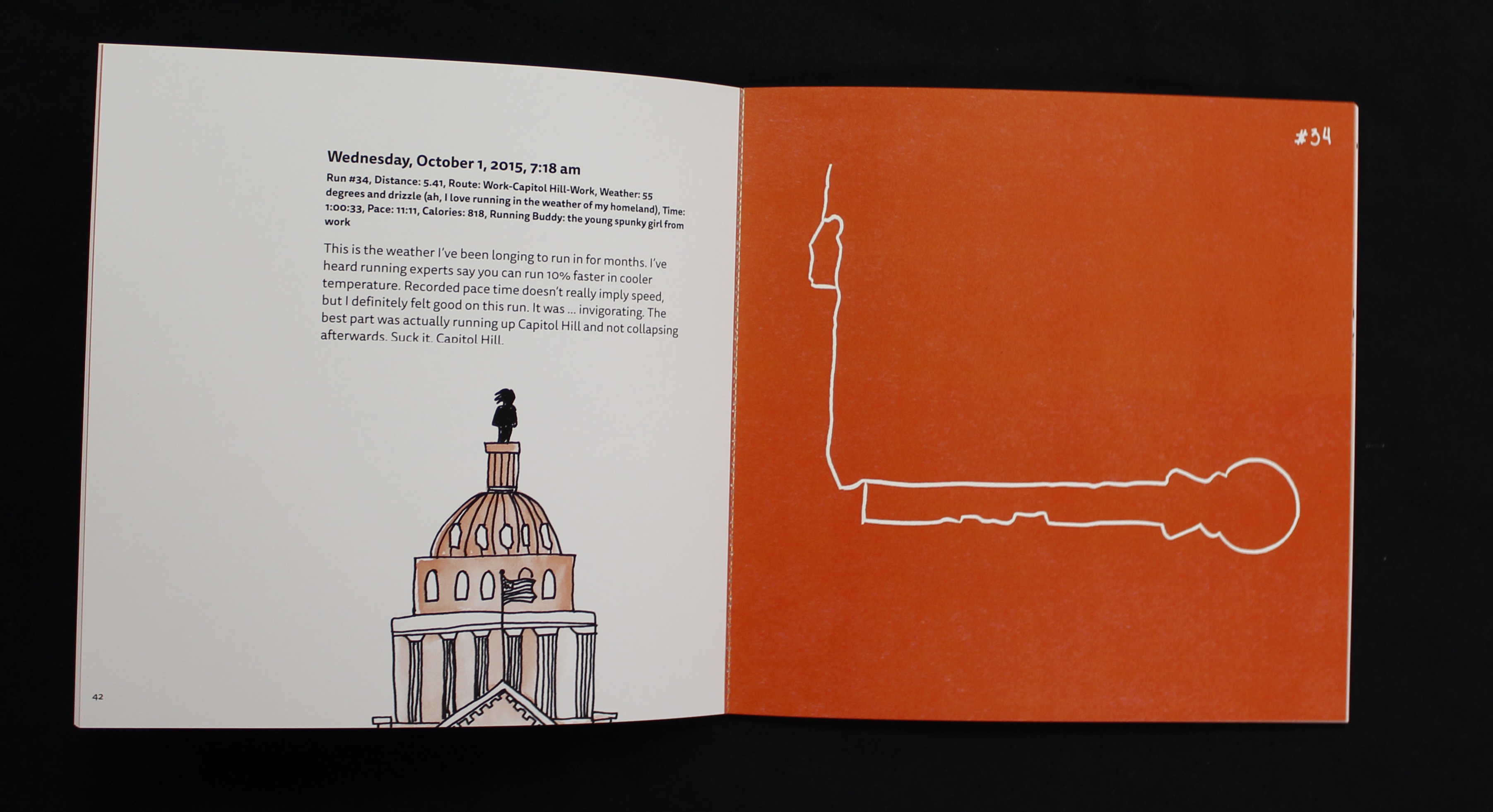
Melody Cook
Not Born to Run, 2015
Digitally Printed Book with Watercolor Illustrations and Relief Print
For almost two years while I was going to grad school and working full time I stopped working out. Completely. After I got roped into training for the Marine Corps marathon, I decided the only way to hold myself accountable for both the race and my final grad school project was to tie them together.
To capture the experience, I wrote, illustrated, and designed a book documenting the training process. I also created a series of relief prints that were informed by the data my running app collected during each run. These prints were installed as a part of my thesis exhibition.
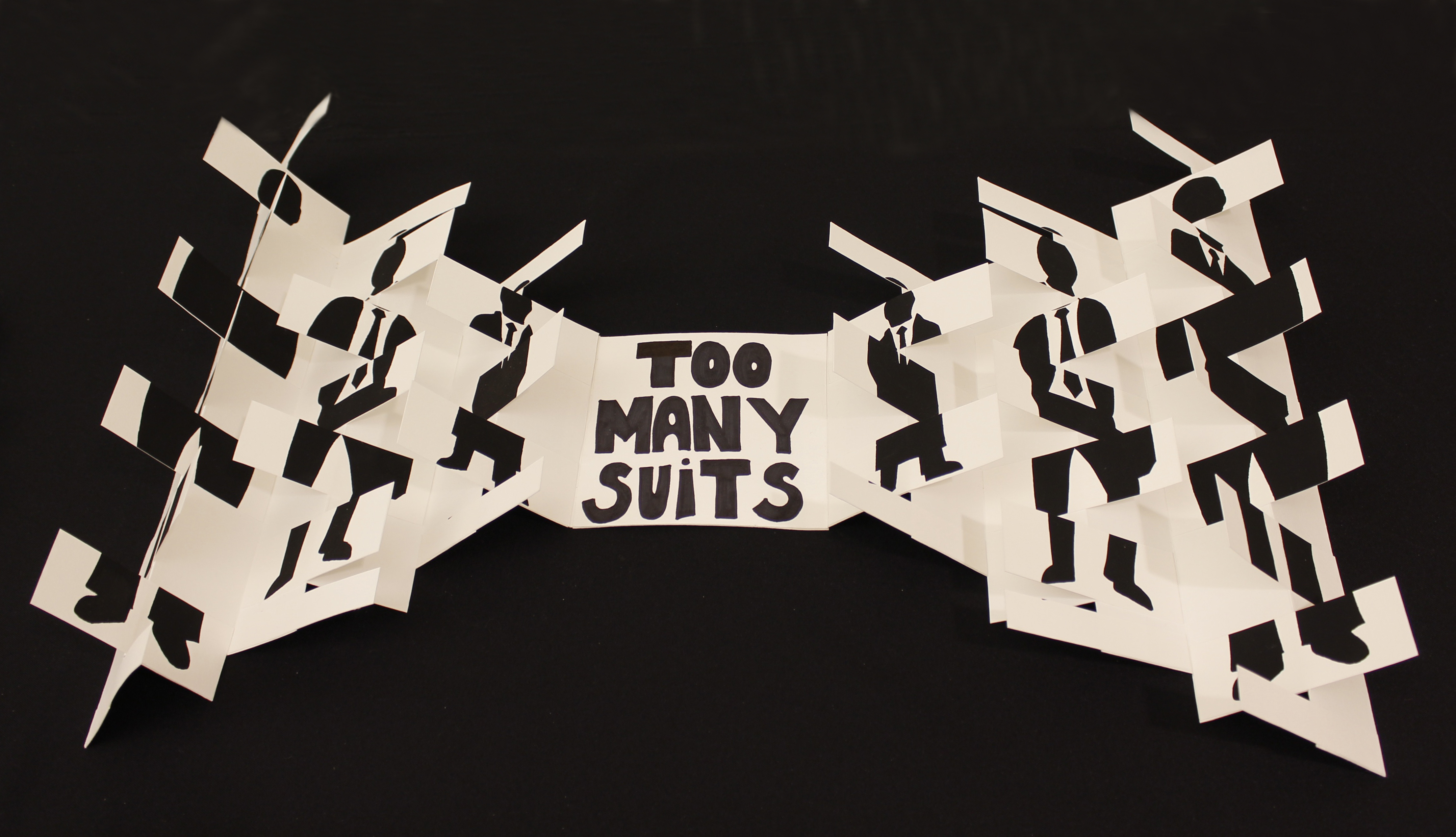 Leah Dwyer
Leah Dwyer
Too Many Suits, 2016
Flag Book
Whenever I venture into Washington DC, I see countless individuals walking around with fancy, no-nonsense suits. I often feel under dressed in my hoodie and jeans. Through my flag book, I wish to showcase the fast paced, rigid vibe I get from many white-collar workers in DC. I’ve created an artist book to communicate my relatable experience in a comedic way.

Camillia Elci
What I Heard in the District, 2016
Artists’ Book
The lines of this book are taken from a poem I wrote purely from conversations I overheard while in Washington D.C. The idea for the poem was inspired by Charles Bernstein’s 66 Experiments.
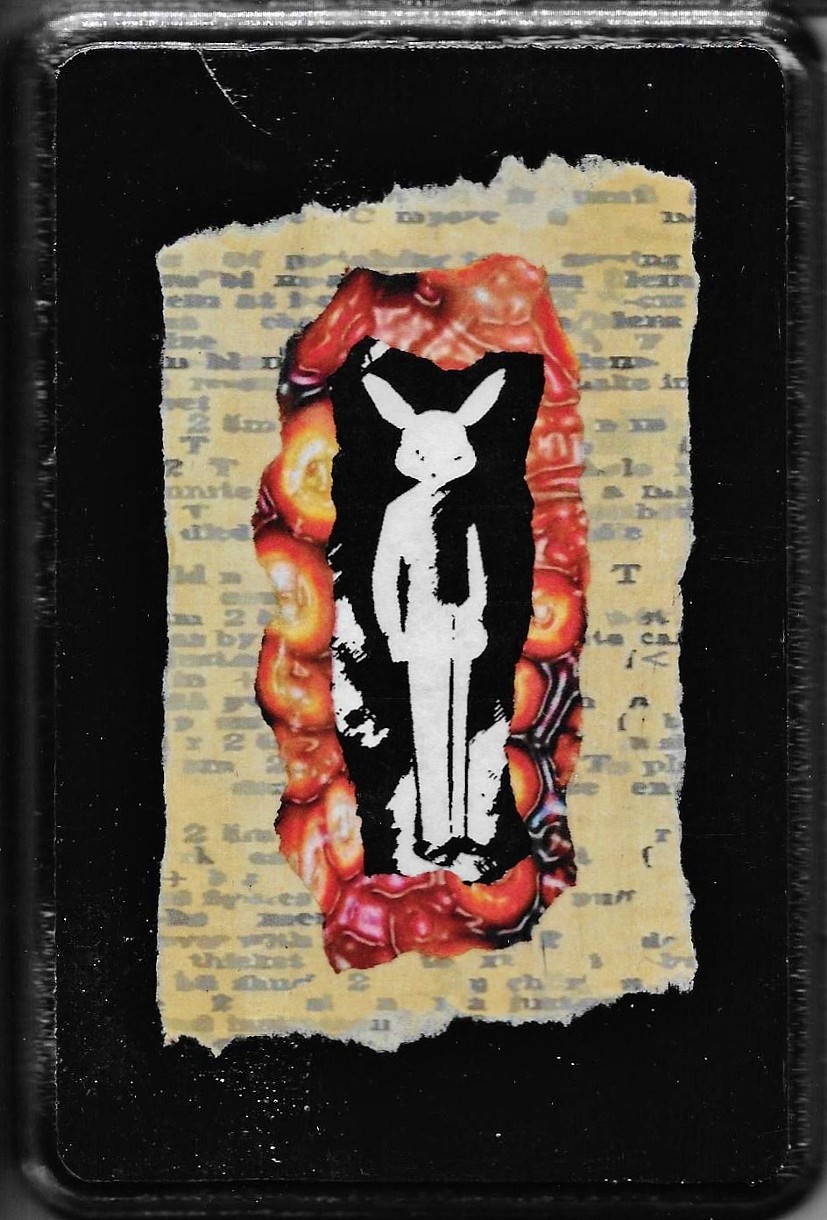 Jessica Kallista
Jessica Kallista
The Octopus and the Bunnyman, 2015
Mixed media on wood
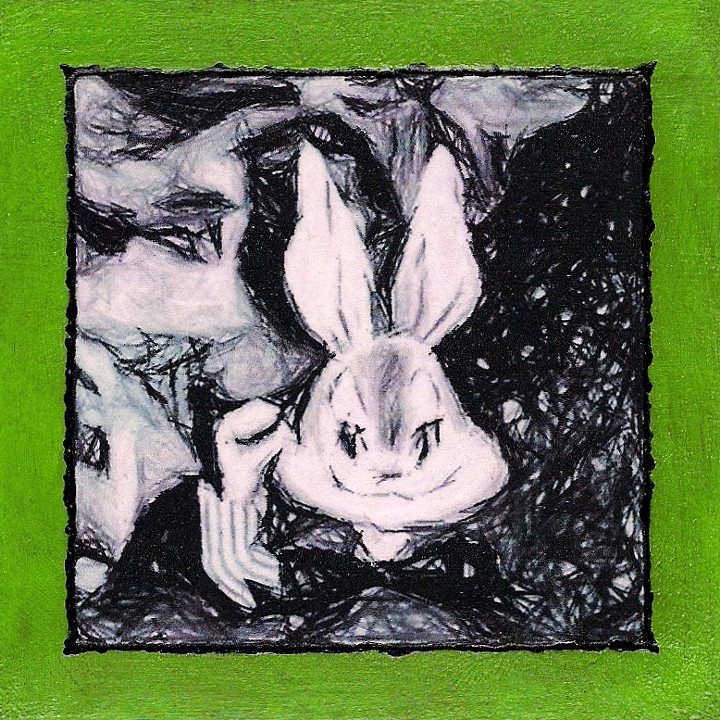 Jessica Kallista
Jessica Kallista
Power to the Bunny People, 2014
Collage on wood panel
When I moved to Fairfax in 1997 I was anxious to put down roots and find a very personal bit of history, local history, with which to connect. I come from a small town in the Midwest, Alton, Illinois, that is rich with unusual history that became part of my personal history—the tallest man who ever lived, the Piasa Bird, the Lincoln-Douglas debates, the birthplace of Miles Davis, the Underground Railroad. I know there is a great deal of Civil War history and Founding Fathers history here in Virginia, but that didn’t really resonate with me. I needed something quirkier. I wanted something very local. We wanted to tap into ideas and energy that could only happen in Fairfax. I’ve been inspired by the local urban legend of the Bunnyman since taking the Bodylore course as part of the Folklore Studies Program with Professor Debra Lattanzi Shutika in my final year at GMU. In my art and my collaboration with other local artists, and at Olly Olly, we took the Bunnyman as our mascot as a sort of mischief maker and aggressive instigator of breaking down barriers through experimentation and change. Utilizing this image of the Bunnyman that I created as a repeating image in much of my art, and on the sign on our storefront at Olly Olly, has helped me connect with Fairfax and have a true sense of place here. This image of the Bunnyman is part of my personal history now and embedded in my experience of place and my memory of what it means to be in Fairfax and of Fairfax. And now that this image of the Bunnyman is out there on view in public, it can also become embedded in the experience of Fairfax culture in general for everyone who sees it and everyone who wants it. It is owned by everyone and by no one. This experience of place and ownership is one of the great powers of urban legends.
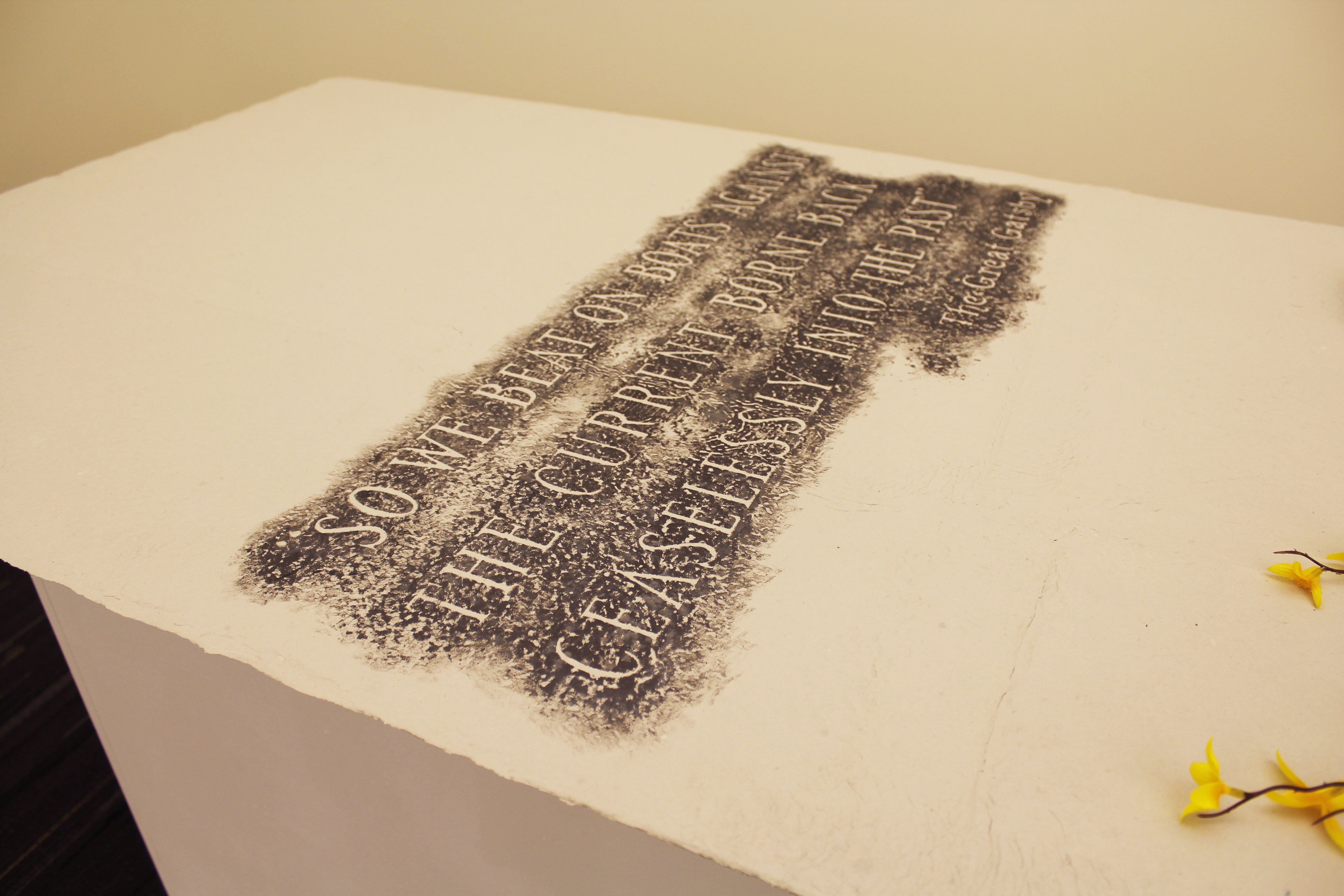
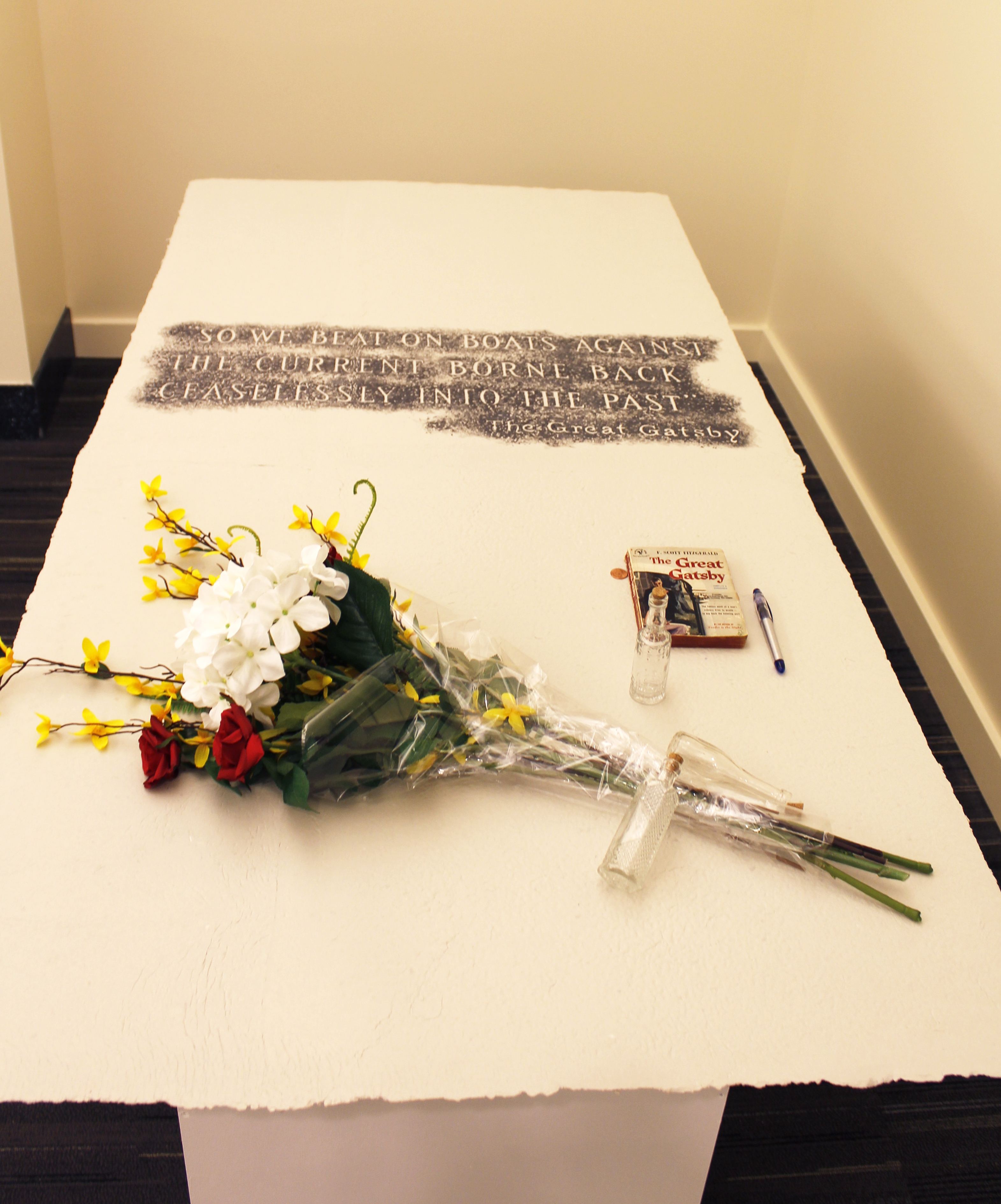
Mark Kelner
So we beat on, boats against the current, borne back ceaselessly into the past.
50 copies of “The Great Gatsby” repulped, ink pigmented with graphite
from the series, “Signs and Wonders”
2016
Growing up in Rockville, which might as well have been the center of the universe to any kid growing up there, it never really hit me how strange it was to have – of all people – F. Scott Fitzgerald buried in a family plot at a local church just off the Pike.
Like most American ninth-graders, I was first introduced to Fitzgerald when I read The Great Gatsby for a class assignment. Only later in life, did I recognize the gravity of its concluding line – beautiful and sad, poetic and haunting.
If writers never really die – if they’re continued to be read, remain relevant, and are celebrated – then the raw materials used to monumentalize them, namely granite, marble, and bronze are the wrong choices to do so.
In reinterpreting Fitzgerald’s grave, I chose to make a handmade paper, a living, breathing material that I repulped from 50 copies of The Great Gatsby bought at local used bookshops. The text is printed with ink pigmented with graphite as a recognition of Fitzgerald’s favorite writing instrument – the pencil.
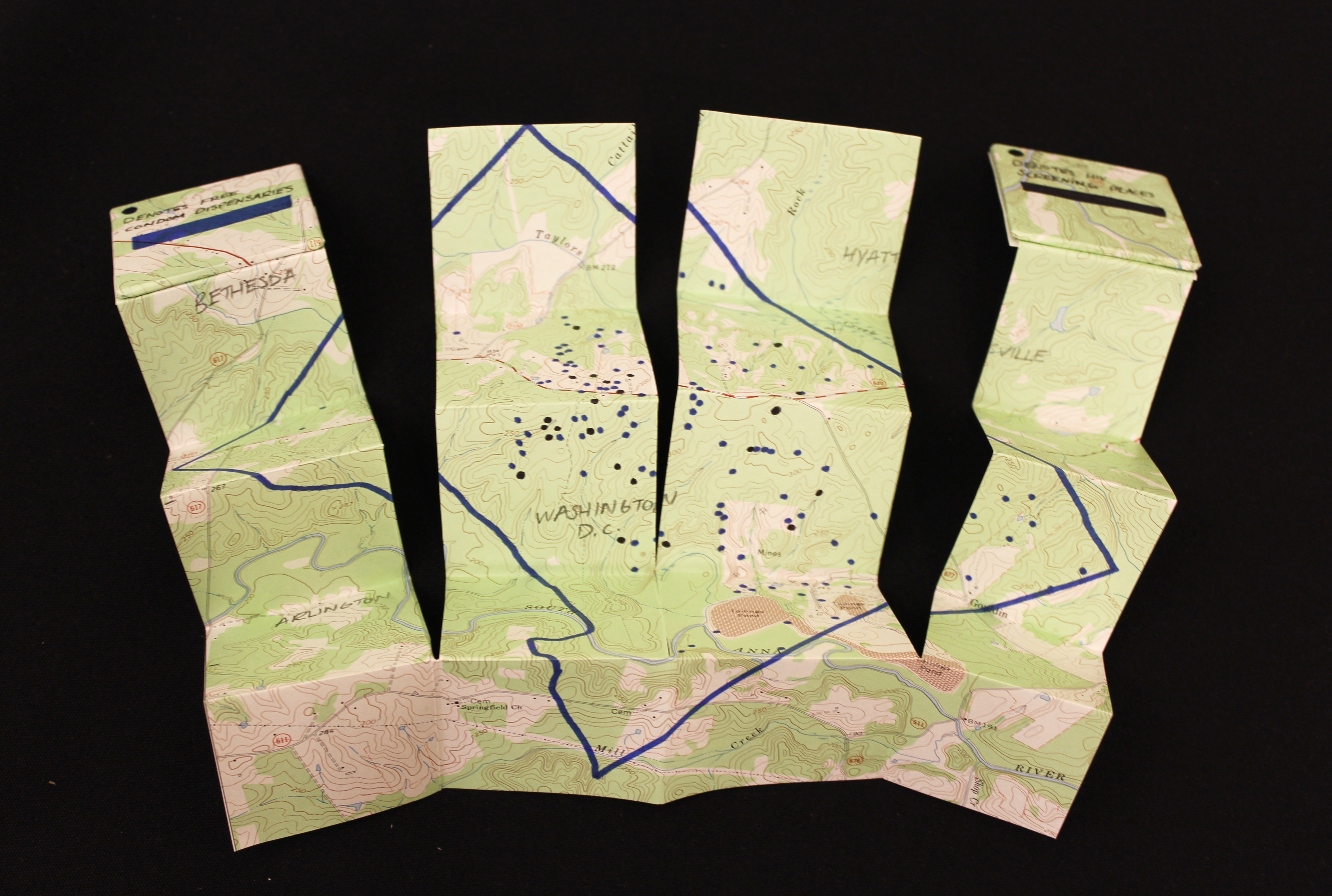 Jacob Lahah
Jacob Lahah
A Map Of HIV Prevention Resources In Washington DC, 2016
Repurposed map
Washington, D.C. is one of the only cities where the HIV rate is increasing as the nation’s rate decreases. I’ve created a book that maps out the places where you can get free condoms and free HIV screening. Three percent of D.C.’s population is infected with HIV which makes it an epidemic. There’s an interesting correlation between the amount of resources D.C. offers for contraception and the increasing HIV rate. It’s an issue that needs to be addressed and needs some corrective action.
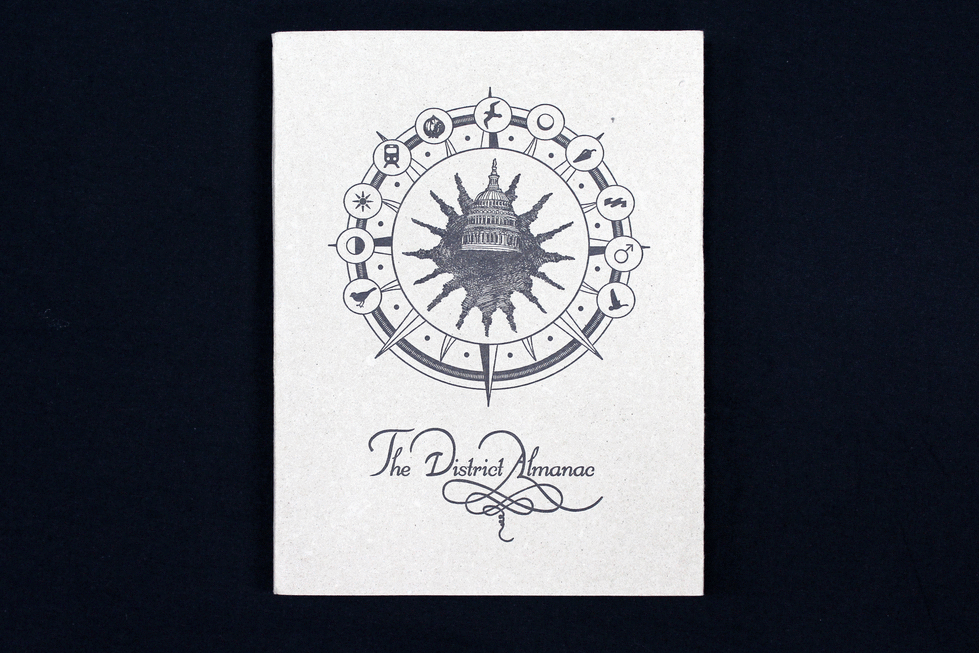 Marginalia Press – Christy Ball, Marjorie Devereux, Li Pallas, Jennaway Pearson, Sydney Reisen, Maria San Martin, and Whitney Stahl.
Marginalia Press – Christy Ball, Marjorie Devereux, Li Pallas, Jennaway Pearson, Sydney Reisen, Maria San Martin, and Whitney Stahl.
The District Almanac, 2012
Woodcut, letterpress, linocuts, screenprint, lithography
The District Almanac was created in the Fall of 2012 by the Studio II class of the Art and the Book Masters Program at at the Corcoran College of Art and Design, under the guidance of Sarah McDermott. The book came as a response to noticeable shifts in human, animal, and plant cycles in our adopted habitat of Washington D.C. using data collected by personal exploration of our surroundings.
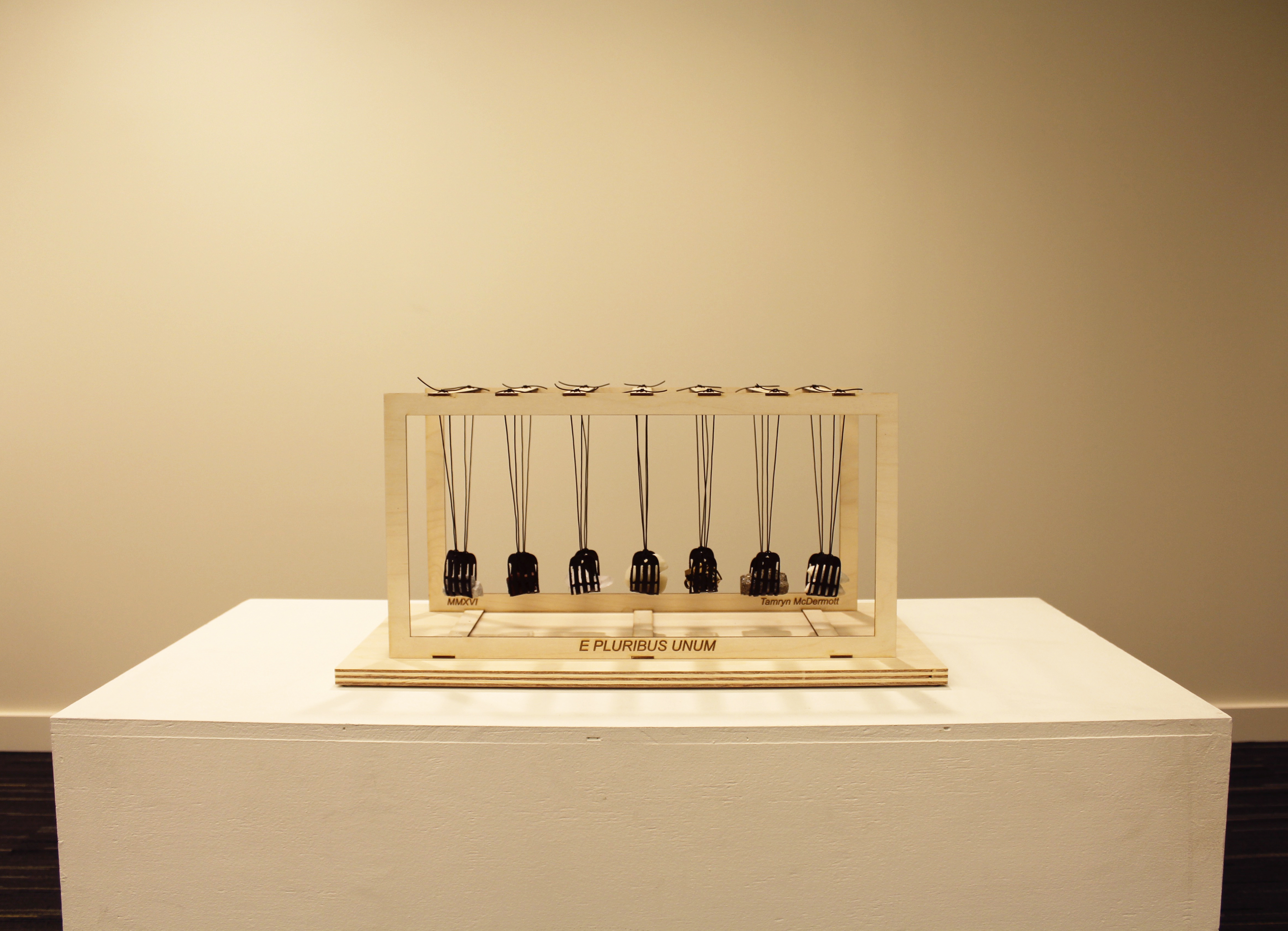 Tamryn McDermott
Tamryn McDermott
E Pluribus Unum, 2016
Birch, leather, marble, brick, glass, wax, bronze, concrete, paper
My methodology as an artist emulates that of a historian and enters the arena of archaeologists, archivists and curators. Historians write, and re-write history, privileging certain evidence while imposing specific agendas, to reshape history. Confronting history as a construction, I provoke viewers through historical representation, unmasking illusions of precision and truth. By deconstructing and analyzing the way the historical record is fabricated, my work reveals the futile nature of preserving an accurate history.
E Pluribus Unum is a sculptural book constructed as a representation of the American political structure, with origins in Imperial Rome. This is one of an edition of laser cut sculptural books. Each suspended leather sling contains a different material meant to represent the political body labeled above. The form of the book is modeled on a Newton’s Cradle, a desktop device that demonstrates conservation of momentum and energy.
Table of Contents

 Anne Smith
Anne Smith
Keep In/Keep Out, 2016
Collage
Keep In/Keep Out is a study in constructing walls and spaces, made from photographs taken by the artist in her neighborhood in Washington, DC. The artificial, constructed quality of the spaces in these images contrasts with their photo-realistic textures. What purpose do these walls serve? The artist gives no certain answer, leaving the question to you, the viewer, whether these walls are protective, restrictive, real or imagined.

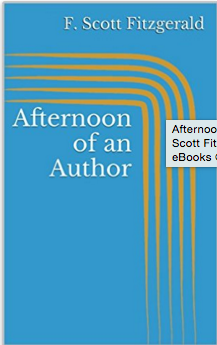
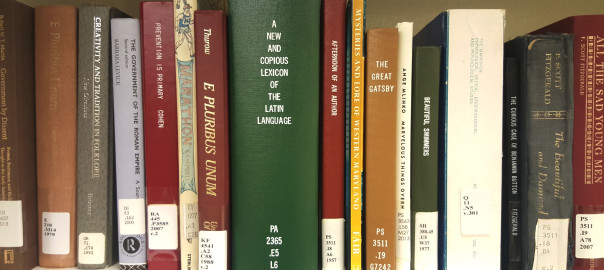

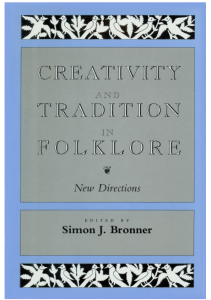
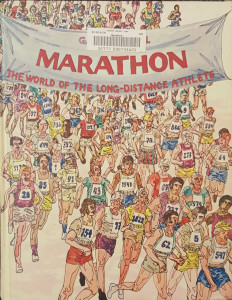
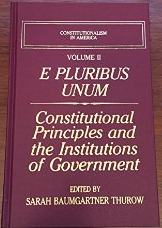

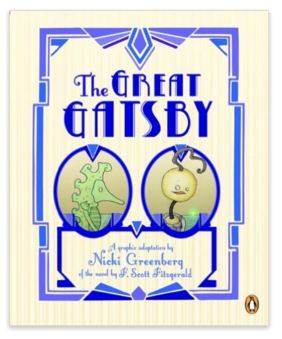

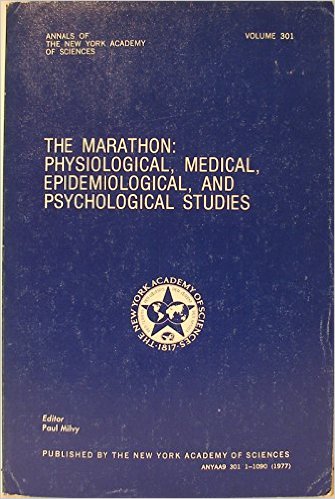
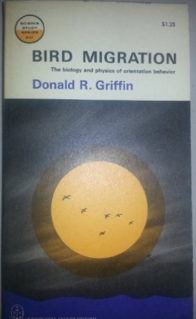
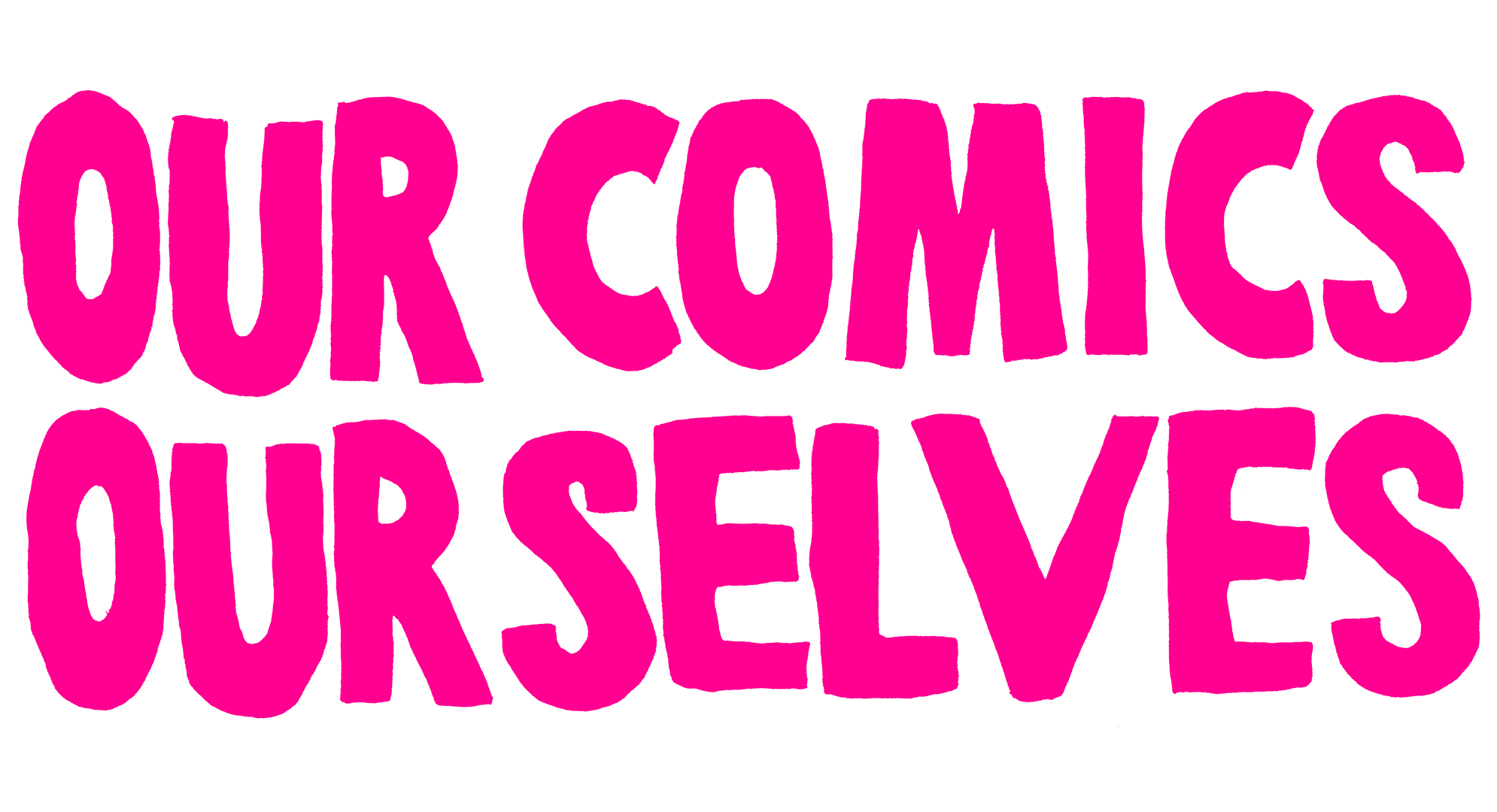
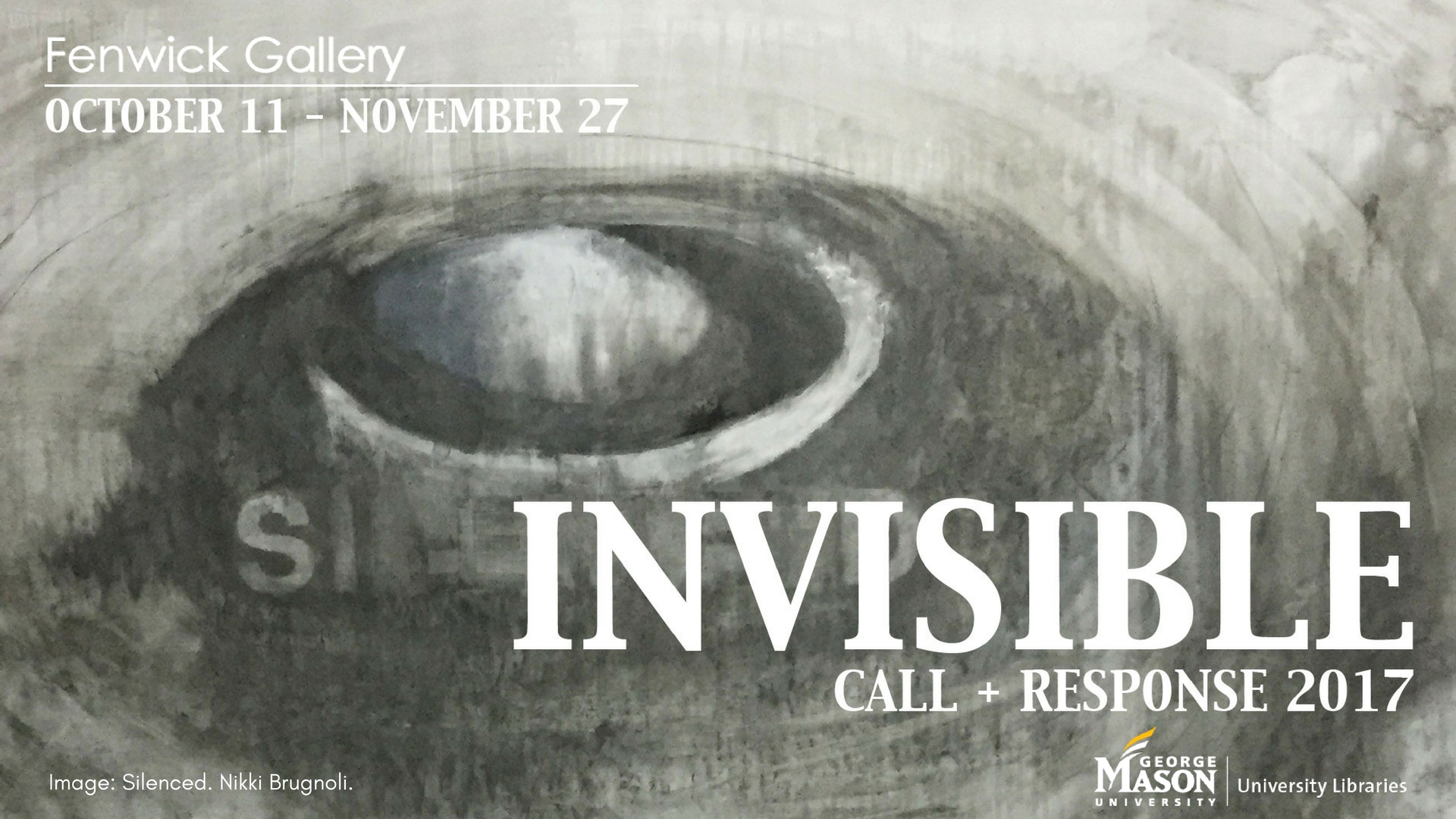
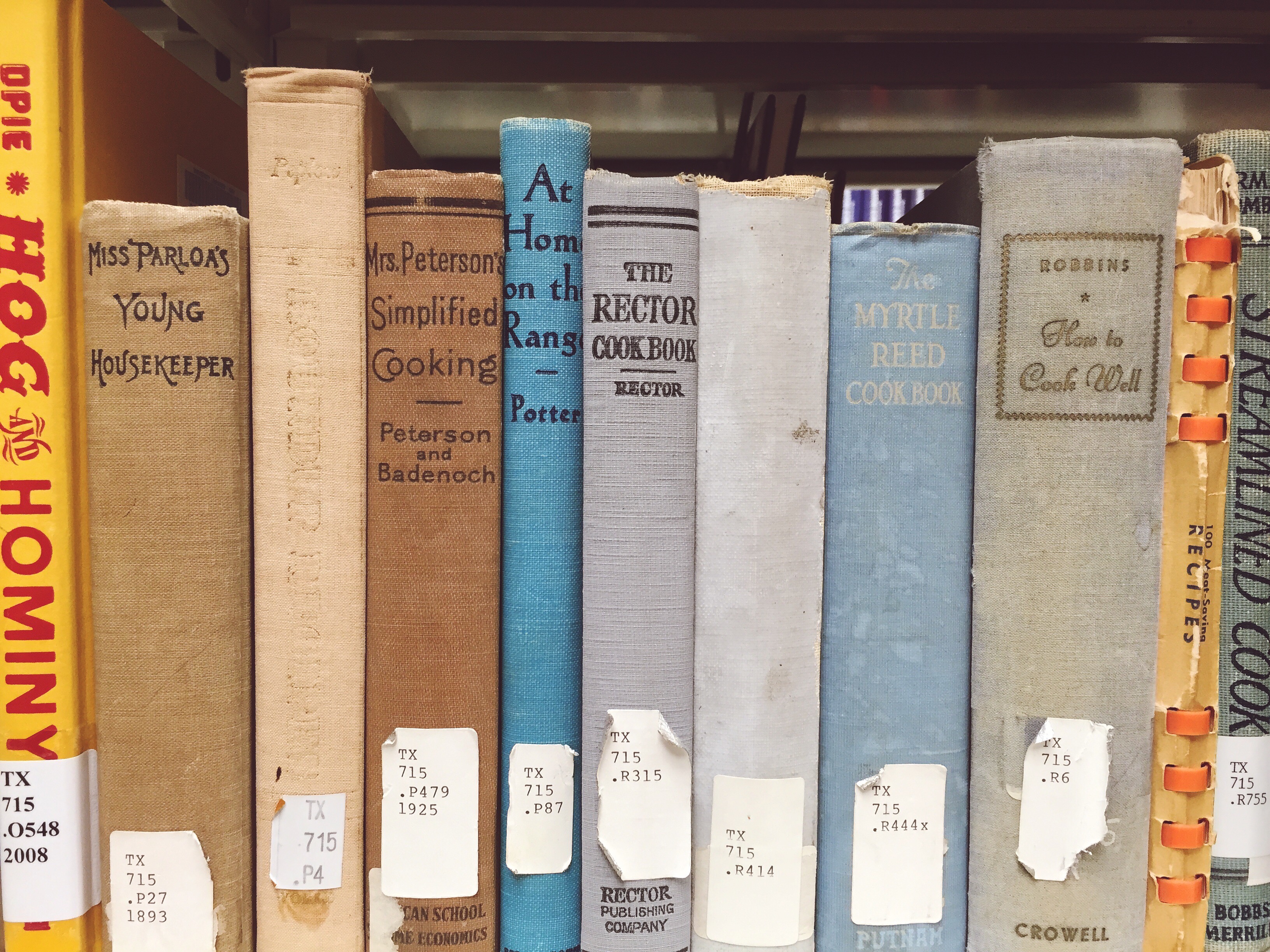
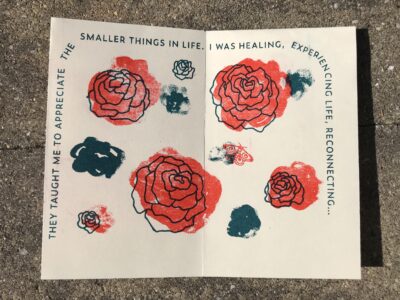
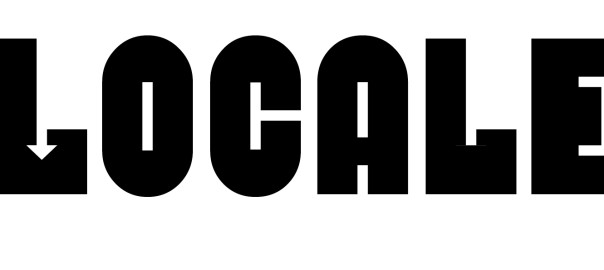
 Christy Ball
Christy Ball


 Leah Dwyer
Leah Dwyer
 Jessica Kallista
Jessica Kallista Jessica Kallista
Jessica Kallista

 Jacob Lahah
Jacob Lahah Marginalia Press – Christy Ball, Marjorie Devereux, Li Pallas, Jennaway Pearson, Sydney Reisen, Maria San Martin, and Whitney Stahl.
Marginalia Press – Christy Ball, Marjorie Devereux, Li Pallas, Jennaway Pearson, Sydney Reisen, Maria San Martin, and Whitney Stahl. Tamryn McDermott
Tamryn McDermott
 Anne Smith
Anne Smith
